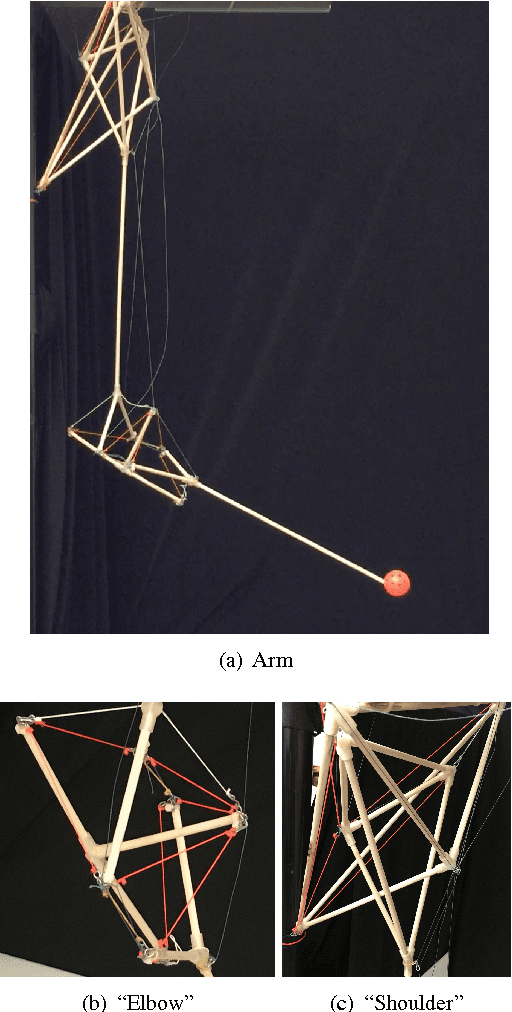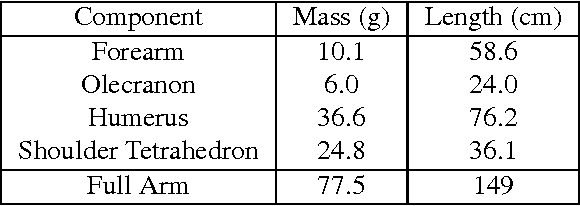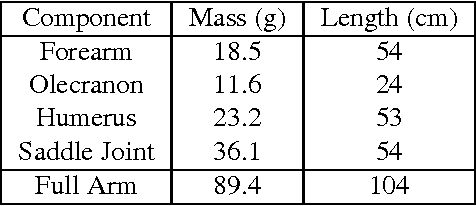A Bio-Inspired Tensegrity Manipulator with Multi-DOF, Structurally Compliant Joints
Paper and Code
Sep 01, 2016



Most traditional robotic mechanisms feature inelastic joints that are unable to robustly handle large deformations and off-axis moments. As a result, the applied loads are transferred rigidly throughout the entire structure. The disadvantage of this approach is that the exerted leverage is magnified at each subsequent joint possibly damaging the mechanism. In this paper, we present two lightweight, elastic, bio-inspired tensegrity robotics arms which mitigate this danger while improving their mechanism's functionality. Our solutions feature modular tensegrity structures that function similarly to the human elbow and the human shoulder when connected. Like their biological counterparts, the proposed robotic joints are flexible and comply with unanticipated forces. Both proposed structures have multiple passive degrees of freedom and four active degrees of freedom (two from the shoulder and two from the elbow). The structural advantages demonstrated by the joints in these manipulators illustrate a solution to the fundamental issue of elegantly handling off-axis compliance.
 Add to Chrome
Add to Chrome Add to Firefox
Add to Firefox Add to Edge
Add to Edge